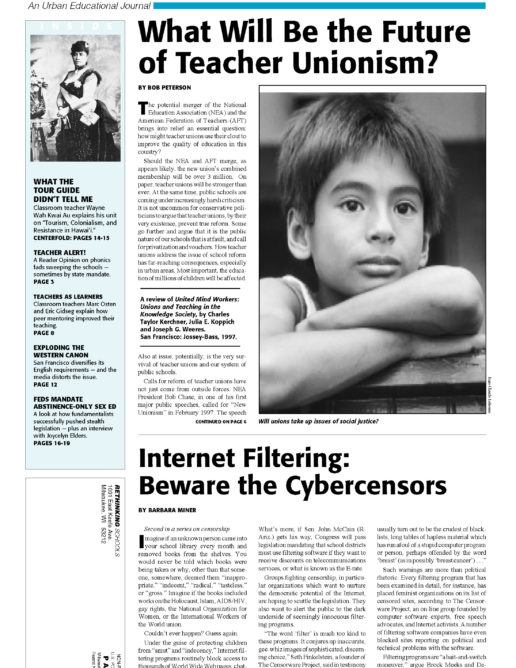The Bell Curve: Stealth Book of the 1990s?
For anyone who thinks The Bell Curve is old news, guess again.
In the December issue of The National Review, Charles Murray was asked in an interview why the book was not cited more in national debates around vouchers, affirmative action, and President Clinton’s proposal for two years of college for everyone. In a typical comment, interviewer Dan Seligman noted that advocates of vouchers for inner-city schools “endlessly take it for granted that poor performance by students reflects only inadequacies by the teaching profession — inadequacies among the learners being a huge unmentionable.”
Murray’s response noted in part: “Vouchers for elementary school can be a good policy idea, no matter what our book says about IQ. But universal college education cannot be. Most people are not smart enough to profit from an authentic college education. But who among Republicans has had the courage to call Clinton on this one? A lot of silence about The Bell Curve can be put down to political cowardice.
“Affirmative action was still politically sacrosanct when The Bell Curve came out in October 1994,” Murray goes on to note. “Within a year, the tide had swung decisively. Did the book play any role? Damned if I know. …”
“My best guess — and the broad answer to your question — is that The Bell Curve is the stealth public-policy book of the 1990s. It has created a subtext on a range of issues. Everybody knows what the subtext is. Nobody says it out loud.

